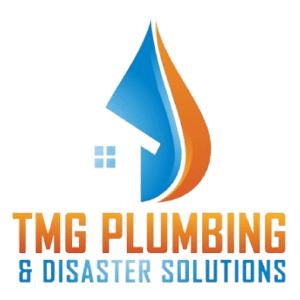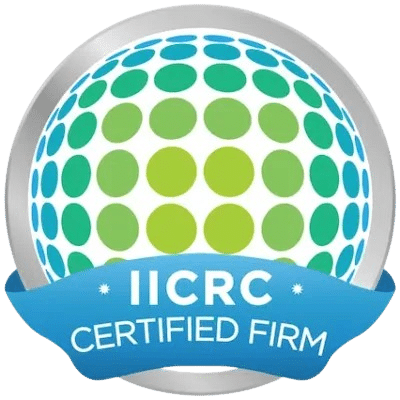As homeowners, we often take our plumbing systems for granted until something goes wrong. When sewer line problems occur, they can quickly escalate from minor inconveniences to major headaches. At TMG Companies, we’ve seen it all when it comes to sewer line issues, and we’re here to share our expertise to help you identify and address these problems before they cause significant damage to your property.
Common Sewer Line Problems
Persistent Clogs and Backups
One of the most common indicators of sewer line problems is recurring clogs that don’t resolve with standard plunging or drain cleaning. When multiple drains in your home back up simultaneously, this typically signals a blockage in your main sewer line rather than in a single fixture. These persistent issues shouldn’t be ignored, as they can lead to sewage backing up into your home – a situation that requires immediate attention and sometimes specialized restoration services.
Collapsed or Damaged Pipes
Older homes, particularly in areas like Connecticut, often have aging sewer infrastructure that’s vulnerable to collapse. When a sewer line collapses, it completely blocks the flow of wastewater and requires urgent repair. This scenario frequently occurs in homes that have experienced significant settling or after events like fires, where the underground infrastructure may have been compromised. In cases where residential fire damage restoration in CT has been performed, it’s advisable to also have your sewer lines inspected for potential damage.
Offset or Misaligned Pipes
Shifting soil, ground settling, and root intrusion can cause sewer pipes to become misaligned at their joints. These offset pipes create opportunities for leaks and blockages as waste can’t flow properly through the compromised sections. To fix offset sewer pipes, a common solution is to use pipe lining techniques, where a flexible resin-coated liner creates a new pipe within the old one, effectively realigning the offset sections.
Bellied or Sagging Sewer Lines
A “bellied” sewer line occurs when a section of pipe sags downward, creating a valley where waste and water collect. This depression becomes a collection point for solid materials, eventually leading to blockages. The solution for a bellied sewer line typically involves excavation to expose the sagging pipe, followed by replacement or realignment of the affected section.
Corroded Pipes
Older metal pipes are susceptible to corrosion, which can lead to leaks, reduced flow capacity, and eventual failure. For aged, corroded sewer lines, trenchless repair methods like pipe relining or pipe bursting often provide the most effective solution without extensive excavation.
Expert Solutions for Sewer Line Problems
Modern Trenchless Repair Methods
At TMG Companies, we utilize advanced trenchless technologies whenever possible to minimize disruption to your property:
Pipe Lining: This innovative technique involves inserting a flexible liner coated with epoxy resin into the damaged pipe. Once in place, the liner is inflated to adhere to the interior of the existing pipe, creating a seamless new pipe within the old one. This method is particularly effective for fixing offset pipes and addressing minor cracks without extensive digging.
Pipe Bursting: For more severely damaged pipes, pipe bursting offers a solution that replaces the entire pipe without traditional excavation. This method involves pulling a new pipe through the old one while simultaneously fracturing the damaged pipe outward.
Traditional Excavation and Replacement
In some cases, particularly with collapsed sewer lines or extensive damage, traditional excavation remains necessary. This process involves:
- Digging a trench to access the damaged section
- Removing and replacing the compromised pipe
- Properly backfilling and compacting the soil to prevent future issues
- Restoring the surface area to its original condition
While more invasive than trenchless methods, excavation may be the most reliable solution for severe cases or when the damage is too extensive for other techniques.
Stabilization for Bellied Sewer Lines
When addressing a bellied or sagging sewer line, our comprehensive approach includes:
- Precise camera inspection to identify the problem area
- Careful excavation to expose the sagging section
- Pipe replacement or realignment as needed
- Proper stabilization of the trench bed with supportive materials like gravel
- Systematic backfilling and compaction to prevent future sagging
Prevention and Maintenance
The best way to avoid costly sewer line repairs is through regular maintenance and careful use of your plumbing system. At TMG Companies, we recommend:
- Scheduling periodic video inspections of your sewer lines, especially in older homes
- Being mindful of what you flush or rinse down drains
- Addressing minor plumbing issues before they escalate
- Having your sewer lines inspected after major property events, including residential fire damage restoration in CT
- Installing root barriers if trees are planted near sewer line paths
When to Call the Professionals
If you notice warning signs such as:
- Multiple drains are backing up simultaneously
- Foul odors around your property
- Unusual green patches in your yard
- Gurgling sounds from toilets or drains
- Slow drainage throughout your home
It’s time to contact experienced professionals like our team at TMG Companies. Early intervention can save you thousands in extensive repairs and prevent secondary damage to your home’s structure and foundation.
As experts in both plumbing infrastructure and restoration services, including residential fire damage restoration in CT, we understand how interconnected your home’s systems are. Our comprehensive approach ensures that all aspects of your property’s infrastructure are properly assessed and maintained for long-term stability and peace of mind.
Don’t wait until a minor sewer issue becomes a major problem. Contact TMG Companies today for expert assessment and solutions tailored to your specific situation.




